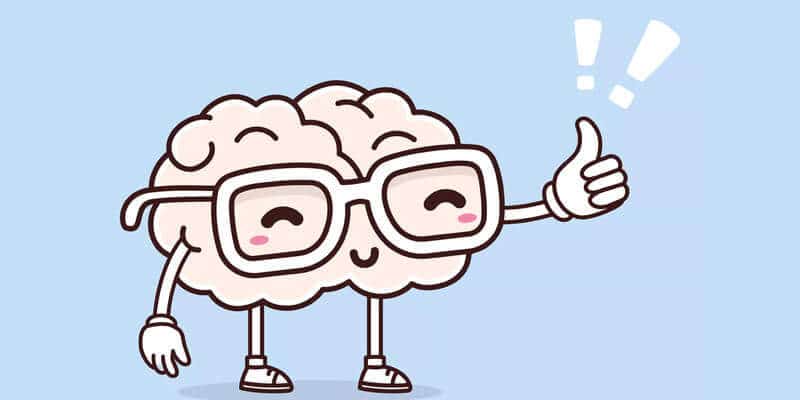What is the Gardner’s Multiple Intelligences theory?

Gardner’s Multiple Intelligences: this article provides a practical explanation of Gardner’s Multiple Intelligences, developed by Howard Gardner. After reading this article, you will have a basic understanding of the types of intelligence and how to apply this theory.
What is Gardner’s Multiple Intelligences?
The theory of multiple intelligences was introduced in 1983 by psychologist Howard Gardner in his book Frames of Mind. The essence of Gardner’s Multiple Intelligences (MI) is that each person has eight types of intelligence.
According to Howard Gardner, intelligence means “the ability to learn, to solve problems”. This can be done in multiple ways. Each person has developed other intelligences more strongly, leading to different kinds of cleverness. With his theory of multiple intelligences, Gardner aims to emphasise that teachers must assess their student’s learning process in a way that provides a correct overview of their strong and weak suits.
8 Types of Multiple Intelligences (MI)
1. Verbal-linguistic; words, language and writing
People with high linguistic-verbal intelligence are typically good with words, both in speaking and in writing. These people are often very good in writing stories, retaining information and reading. If your linguistic-verbal intelligence is highly developed, good career choices include: Writer/journalist, lawyer and teacher.
2. Logical-mathematical; analysing problems and mathematical operations
People with high logical-mathematical intelligence have a strong capability to reason, recognise patterns and logically analyse problems. These people often tend to think conceptually about numbers, connections and patterns. If your logical-mathematical intelligence is highly developed, good career choices include: Scientist, mathematician, computer programmer, engineer and accountant.
3. Visual-spatial; visual and spatial insight
People high in visual-spatial intelligence are good at visualising objects, such as instructions, maps, graphs, videos and images. If your visual-spatial intelligence is highly developed, good career choices include: Architect, artist and engineer
4. Musical-rhythmic; rhythm and music
People with high musical intelligence are good at thinking in patterns, rhythms and sounds. They have a strong appreciation for music and often excel at musical composition and performance. When your musical intelligence is highly developed, good career choices include: Musician, composer, singer, music teacher and conductor.
5. Bodily-kinaesthetic; physical movement, motor control
Those with high physical-kinaesthetic intelligence are good at moving their body, carrying out actions and physical control. People who are strong in this area generally have excellent hand-eye coordination and agility. When your physical-kinaesthetic intelligence is highly developed, good career choices include: Dancer, building, sculptor and actor.
6. Naturalistic; finding patterns and relationships with nature
Naturalistic is the most recent addition to Gardner’s theory and was opposed more than his original seven intelligences were. According to Howard Gardner, people who have high naturalistic intelligence are more in harmony with nature and are often interested in cherishing, exploring the environment and learning from others.
These people are often said to be very aware of even the most subtle changes in their surroundings. When your naturalistic intelligence is highly developed, good career choices include: Biologist, conservationist, gardener and farmer.
7. Interpersonal; obtaining insight into and dealing with other people
Those with high interpersonal intelligence are good at understanding and dealing with other people. These people are able to evaluate the emotions, motivations, desires and intentions of those around them. When your interpersonal intelligence is highly developed, good career choices include: Psychologist, philosopher, counsellor, salesman and politician.
8. Intrapersonal; introspection and self-reflection
Individuals with high intrapersonal intelligence are aware of their own emotional conditions, feelings and motivations. They tend to enjoy introspection and analysis, including daydreaming, exploring relationships with others and assessing their personal strong suits. When your intrapersonal intelligence is highly developed, good career choices include: Philosopher, author, theoretician and scientist.
Application of the Gardner’s Multiple Intelligences theory
In the classroom
By means of examples, we will briefly explain how you can apply the Multiple Intelligences theory as a teacher.
For each type of intelligence, you can come up with various learning activities and project ideas.
Below, you will find a number of examples for each type of intelligence.
Verbal-linguistic
Completing crossword puzzles with vocabulary words, playing word games, writing short stories for a newsletter, writing poems for a class poetry book, telling a story to the class or holding a debate.
Logical-mathematical
Playing mathematical games such as mancala, dominoes, chess, checkers and Monopoly, looking for patterns in the classroom, at school, outside and at home, playing logical games and making analogies.
Visual-spatial
Making photos for assignments and newsletters in the classroom, using clay or playing with dough to make objects or concepts that represent lessons, use of pictorial models such as flow charts, visual cards, Venn diagrams and timelines to connect new materials to known information, taking notes with concept mapping, mind mapping and clustering or using cards to study geographic locations that were discussed in class.
Musical-rhythmic
Writing own songs and music about different subjects, writing a poem to music and subsequently performing this for the rest of the class, recording a self-written poem with an existing melody or listening to music from various historical periods.
Physical-kinaesthetic
Playing motion games such as Twister and Simon Says, using charades to express characters from a book, vocabulary words, animals or other objects, organising scavenger hunts, looking for items that are related to a theme or unity, building objects with building blocks, cubes or Legos to represent concepts from history lessons and using electronic motion simulation games.
Naturalistic
Caring for plants in class, caring for pets in class, sorting and classifying natural objects, such as leaves and stones, studying animal habitats, observing the natural environment or organising or participating in cleaning activities in parks.
Interpersonal
Working in collaborations to design and complete projects, working in pairs to learn mathematical facts, interviewing people with knowledge on certain subjects, tutoring younger students or classmates or using dolls to do a puppet show.
Intrapersonal
Writing reflective articles on content-related subjects, writing essays from the perspective of historical figures, writing a literary autobiography, writing down goals for the future and thinking of ways to achieve these, keeping journals or logs for a year or making a scrapbook for their poems, papers and reflections.
Now it’s your turn
What do you think? Do you recognise the explanation about multiple intelligences or do you have anything to add? When do you think the multiple intelligences theory is effective? What do you believe are success factors that contribute to the practical application of this theory?
Share your experience and knowledge in the comments box below.
More information
- Armstrong, T. (2009). Multiple intelligences in the classroom. Ascd.
- Gardner, H. (1983). Frames of mind: The theory of multiple intelligences. NY: Basics.
- Gardner, H. (2006). Multiple Intelligences: New horizons in theory and practice. Basic books.
- Kagan, S., & Kagan, M. (2009). Meervoudige intelligentie: het complete MI boek. Bazalt.
How to cite this article:
Sari, J. (2018). What is the Gardner’s Multiple Intelligences theory?. Retrieved [insert date] from Toolshero: https://www.toolshero.com/personal-development/gardners-multiple-intelligences/
Add a link to this page on your website:
<a href=”https://www.toolshero.com/personal-development/gardners-multiple-intelligences/”>Toolshero: What is the Gardner’s Multiple Intelligences theory?</a>
Published on: 08/10/2018 | Last update: 01/30/2023













